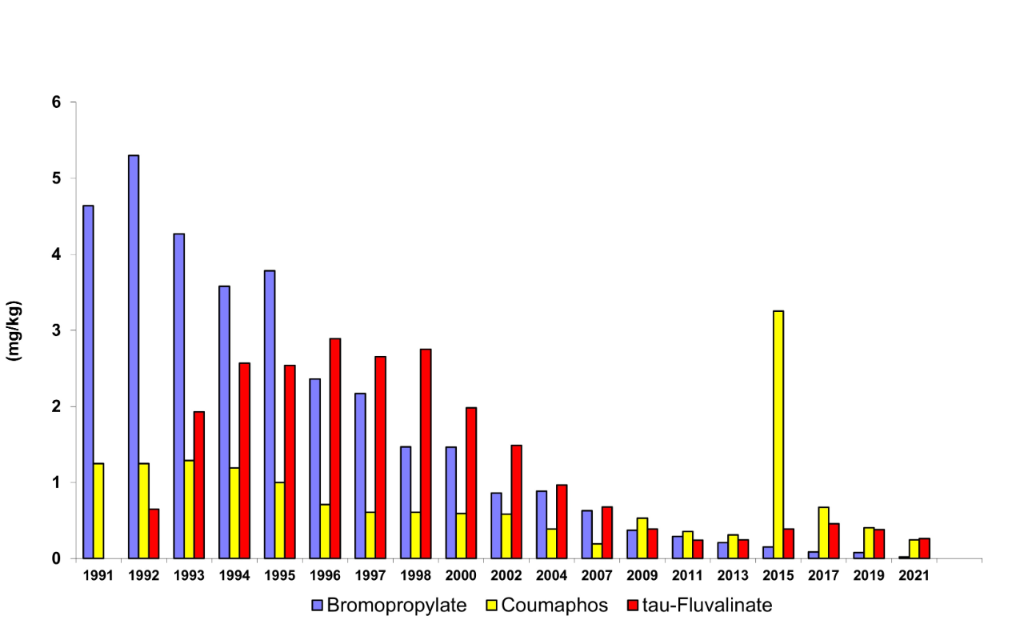Chemical Varroa control is the most important contamination source for bee products as these chemical substances are repeatedly used. Only organic acids and thymol should be used. When applied properly, there are no problematic residues in bee products.
Our results show, that in recent years the contamination of wax has diminished (exception coumaphos), due to increased use of alternative Varroa control.
In recent years, we have observed in our Swiss beeswax monitoring programme an increase in Coumaphos residues. This led us to assume the use of pharmaceuticals with the active ingredient Coumaphos, used to control the Varroa mite. In order to verify this, we treated 15 colonies with CheckMite+, then determined the level of Coumaphos residues in the beeswax. We observed significant residue levels subsequent to a single application, which could pose a risk for the bees. Moreover, the recycling of these combs could lead to higher levels of residues in the common wax cycle.
Die Qualität des Bienenwachses: Rückstände (German) (PDF, 156 kB, 14.09.2016)
S. Bogdanov, V. Kilchenmann (2009)
Acaricide residues in honey, beeswax and propolis (PDF, 46 kB, 14.09.2016)
S. Bogdanov, V. Kilchenmann, A. Imdorf (1999)
Our survey shows that thymol residues in beeswax increased progressively starting from 1996 and reached a maximal annual value of 87.5 mg/kg in 2009. Since then, thymol residues have decreased continuously to an
annual value of 17.4 mg/kg in 2019, suggesting that nowadays fewer beekeepers use thymol-containing products as compared to 2009.

The yearly surveys on winter mortality in which we also ask for the type of Varroa treatment showed that 30% of the participating beekeepers were using thymol-containing products for summer treatments in 2002, whereas in 2019, fewer beekeepers (3%) used these products.

Die Qualität des Bienenwachses: Rückstände (German) (PDF, 156 kB, 14.09.2016)
S. Bogdanov, V. Kilchenmann (2009)
Thymol residues in wax and honey after Apilife VAR treatment (PDF, 757 kB, 14.09.2016)
S. Bogdanov, V. Kilchenmann, A. Imdorf (1998)







